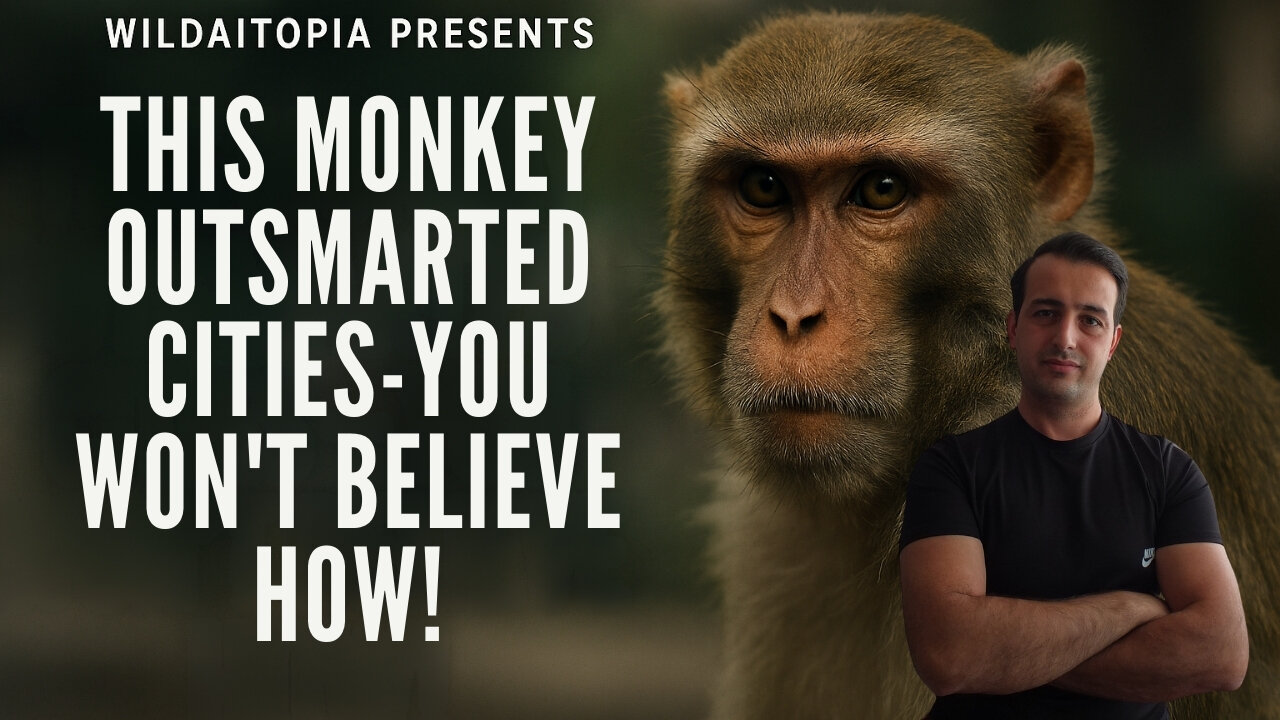Premium Only Content

Rhesus Macaque: The Urban Survivor | Discover the Primate's Secrets
Rhesus Macaque: The Urban Survivor | Discover the Primate's Secrets
Ever wondered how some animals thrive amidst urban chaos? Dive into the world of the rhesus macaque, a primate that has mastered both the wild and the city
🐒 Species Profile: Rhesus Macaque (Macaca mulatta)
📏 Physical Characteristics
Size: Head-body length ranges from 47 to 64 cm (18.5 to 25.2 inches), with a tail length of 21 to 30 cm (8.3 to 12 inches).
Weight: Males average 7.7 kg (17 lbs), while females average 5.3 kg (11.7 lbs).
Appearance: They have brown or grey fur with a pink, hairless face. The rump and legs often exhibit an orange hue.
🌍 Habitat and Distribution
Geographic Range: Native to South, Central, and Southeast Asia, including countries like India, Nepal, China, and parts of Southeast Asia.
Habitat: Highly adaptable, they inhabit forests, grasslands, and urban areas. Their ability to thrive in diverse environments, including cities, showcases their remarkable adaptability.
🍽️ Diet and Feeding Habits
Diet: Primarily herbivorous, feeding on fruits, seeds, roots, buds, bark, and cereals. They also consume insects and small animals occasionally.
Feeding Behavior: They have cheek pouches to store food temporarily, allowing them to forage efficiently.
🧬 Reproduction and Lifespan
Sexual Maturity: Females reach sexual maturity at 2.5 to 5.5 years, while males mature around 6.5 years.
Breeding Season: Mating typically occurs from October to December, with births aligning with periods of food abundance.
Gestation Period: Approximately 135 to 194 days.
Lifespan: In the wild, they live around 20 to 30 years, while in captivity, they can live up to 40 years.
🧠 Behavior and Social Structure
Social Structure: They live in matrilineal troops ranging from 20 to 200 individuals. Females remain in their natal groups, while males typically migrate.
Communication: Utilize a variety of facial expressions, vocalizations, and body postures to communicate.
Daily Activities: Spend time foraging, grooming, resting, and playing. Younger monkeys engage more in play, which is crucial for social development.
🧬 Scientific Significance
Rhesus macaques have been instrumental in medical and biological research due to their physiological similarities to humans. They have contributed to the development of vaccines for rabies, smallpox, and polio, and have been used in HIV/AIDS research.
Can a monkey survive in a concrete jungle? The rhesus macaque has not only adapted — it's thriving. Discover how these urban survivors outsmart traffic, people, and even technology in this 8K cinematic wildlife documentary.
🔔 Subscribe for more wild intelligence from the animal kingdom.
🎥 Captured and narrated by WildAITopia.
#RhesusMacaque #SmartMonkey #UrbanWildlife #MonkeyGenius #WildAITopia #NatureVsCity #WildlifeIntelligence #DocumentaryAnimals
🌍 Explore the Wild Side of AI 🔮
👇 Dive into the full multiverse of WildAItopia 👇
📸 Instagram: https://www.instagram.com/wildaitopia/
🎵 TikTok: https://www.tiktok.com/@wildaitopia
📝Blog: https://wildaitopia.blogspot.com/
🌌Tumblr: https://www.tumblr.com/blog/wildaitopia
🐦X (Twitter): https://x.com/WildAItopia
Rumble : https://rumble.com/register/WildAITopia/
Dailymotion: https://dailymotion.com/wildaitopia
✨ Art. Chaos. Code. Consciousness.
Step into the glitch — where the future gets weird, and the wild gets digital.
👇 Like what you saw?
Subscribe for more untold animal stories, wild truths, and cinematic encounters.
🌿 Turn on notifications – the jungle has more secrets to reveal.
-
 LIVE
LIVE
putther
5 hours ago $1.48 earned⭐ Bounty Hunting on GTA Online & GTA 5 RP ❗
131 watching -
 2:03:20
2:03:20
Joker Effect
3 hours agoYou Will Never Believe How Cooked Kick Streamers Are. Come Debate Me If You Think I am Wrong!
14.2K1 -
 LIVE
LIVE
FrizzleMcDizzle
5 hours agoSilent Hill f - NEW HORROR GAME - COME CHAT
98 watching -
 4:01:22
4:01:22
Mally_Mouse
6 days ago🌶️ 🥵Spicy BITE Saturday!! 🥵🌶️- Let's Play: Unrailed 2!
30.7K1 -
 23:53
23:53
MYLUNCHBREAK CHANNEL PAGE
1 day agoIstanbul SHOULD NOT Exist - Pt 3
59.1K28 -
 LIVE
LIVE
RaikenNight
3 hours ago $0.10 earnedMEGABONK
116 watching -
 LIVE
LIVE
Misfit Electronic Gaming
7 hours ago $0.22 earned"LIVE" "Clover Pit" Is out Now "HELLDIVERS 2" Managed Democracy Maybe REPO +More
21 watching -
 4:47:04
4:47:04
ManoloCalifas
6 hours ago🔴 LIVE - DARK SOULS III SEAMLESS CO-OP KINDA VIBES
6K -
 LIVE
LIVE
StuffCentral
6 hours agoBad Company Presents: Ball in the fall, Two 1v1 cash prize tournaments back to back!
39 watching -
 4:34:39
4:34:39
Midnight In The Mountains™
5 hours agoTURTLE CAM LIVE - BABY SNAPPING TURTLE OVER NIGHT RUMBLE WATCH!
11.3K